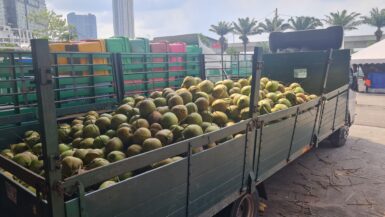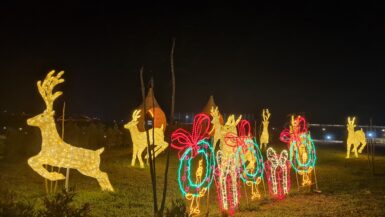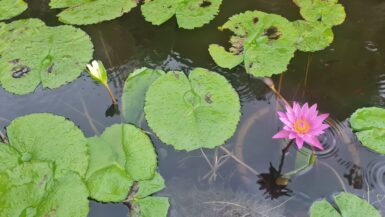Lhong was a historic port and warehouse in siheyuan-style (Chinese courtyard architecture). It was built in 1850 as a port for overseas shipping from British Malaya, mainland China, and British Hong Kong by Phraya Pisansuphaphol (Chuen), a wealthy Thai Chinese.
Lhong 1919 Bangkok was the place we visited after a nice authentic Thai cuisine at Naam 1608 Riverside Restaurant

It’s a new tourist attraction in Bangkok, Thailand on the Thonburi side.

A mural painting on the entrance is another reflection of the Chinese element.

I guess the entrance part is previously a road known as “Wang Lee Road”.
Entering the compound, you can witness that Lhong was a historic port and warehouse in siheyuan-style (Chinese courtyard architecture).
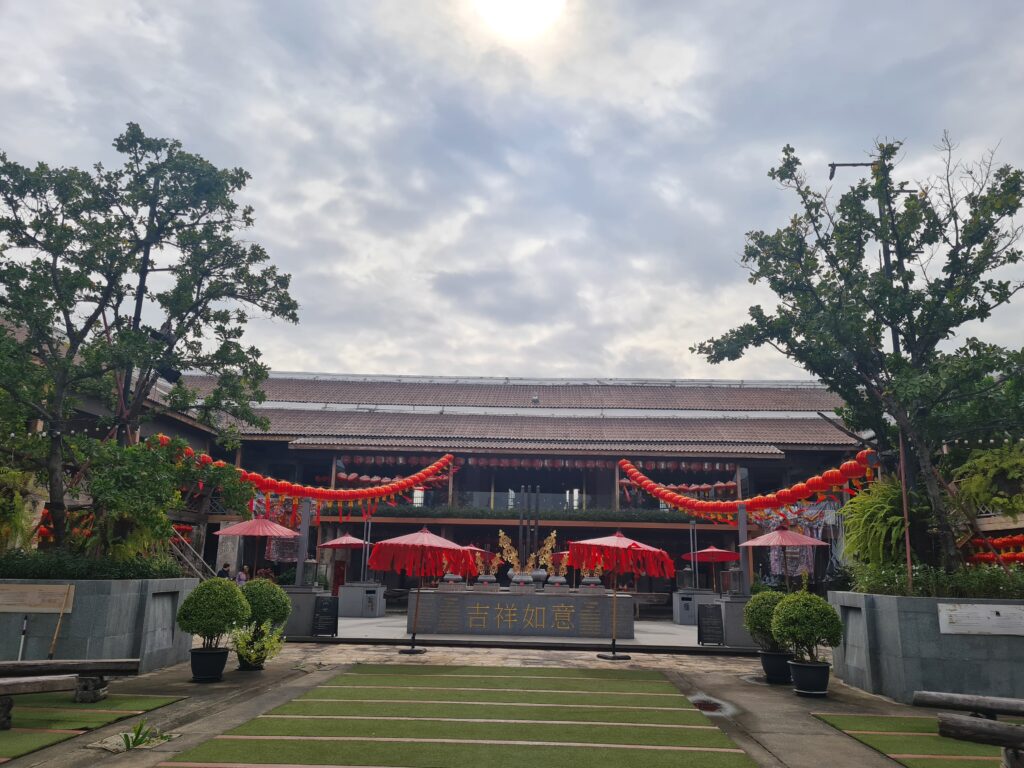
19th-century Chinese mansion restored, supposedly as a mixed-use complex with restaurants, stores & a shrine.
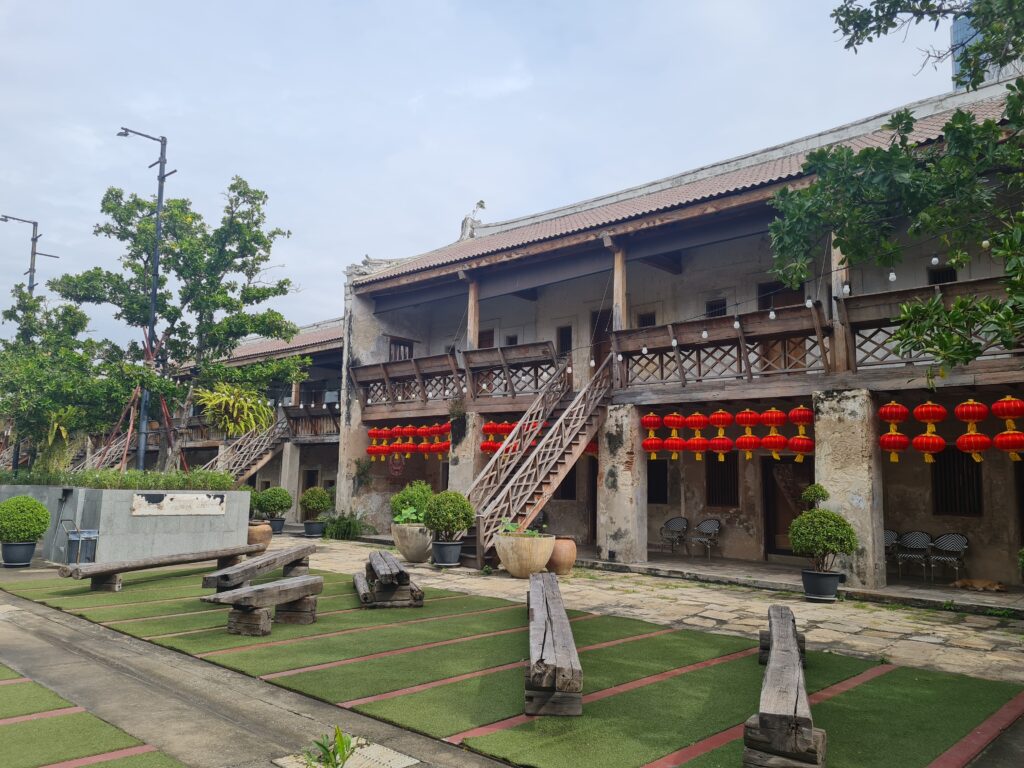
This could be due to the COVID-19 challenges for the past 2 years – this place has not been as lively as it is supposed to be yet during our visit.

However, the building is well-restored and set up.

Unintentionally captured a photo with someone who looks like a swordsman in the movie with olden day themes.
Lhong 1919 Bangkok, Upper Floor View

No doubt this is a good place to explore historical architecture.

The wooden architecture and huge area of the mansion shows how wealthy the owner could be during his time.

It could be one of Bangkok’s best-kept secrets.

The sacred praying area.
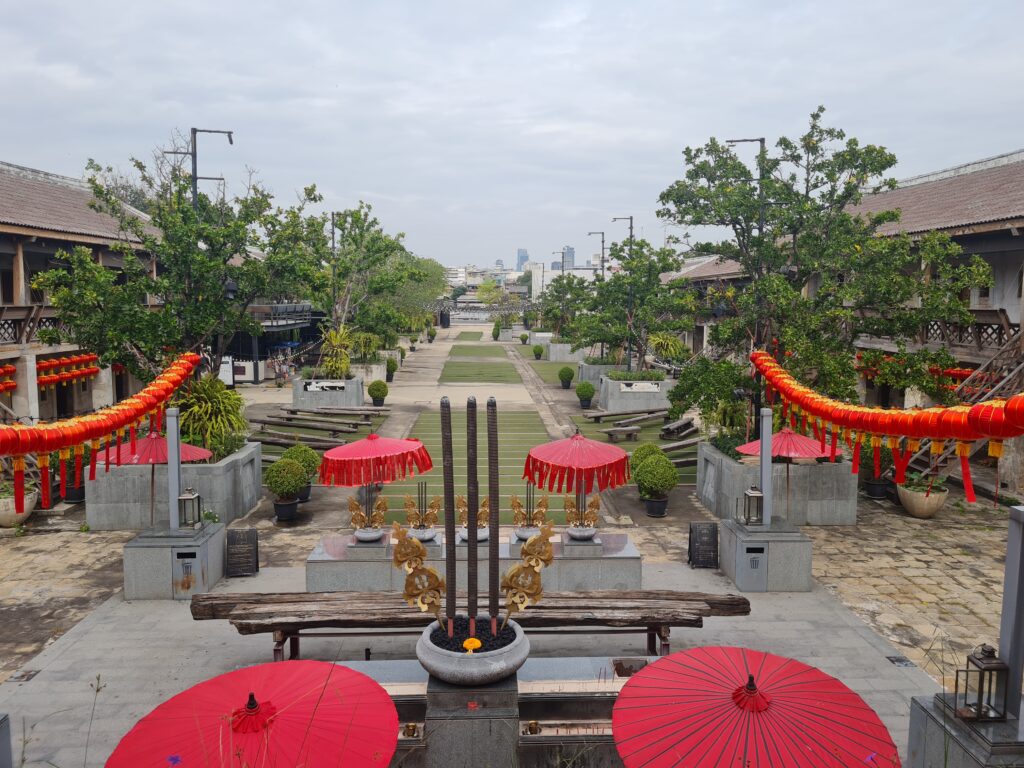
The view from the upper floor is awesome, the whole stretch towards the riverside.

One of the rooms at the upper floor.

Close-up view of the shrine.
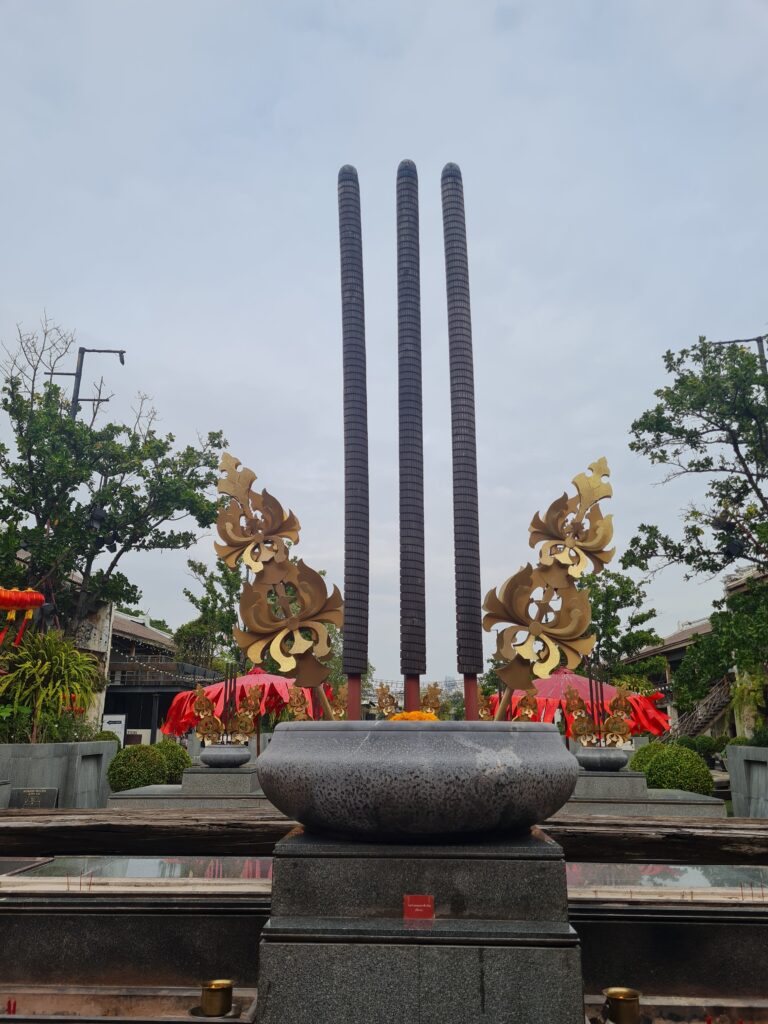
Three big Incense candles.

Going downstairs and turn right towards the riverside.
Wharf No. 41
This is one of the famous Bangkok attractions by the riverside.
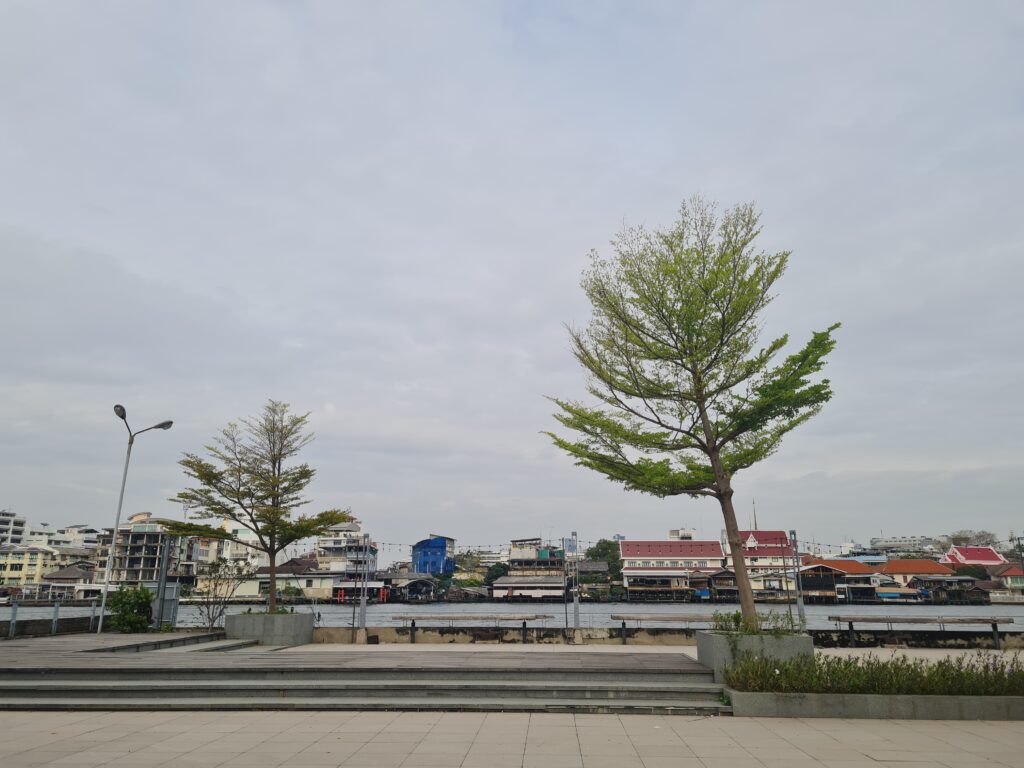
This place was built in 1850 as a port for overseas shipping from British Malaya, mainland China, and British Hong Kong by Phraya Pisansuphaphol (Chuen), a wealthy Thai Chinese.

Spotted a Panda in red Chinese clothing, not that Super Panda I know.

There is also a Mazu Shrine at Wanglee Pier.
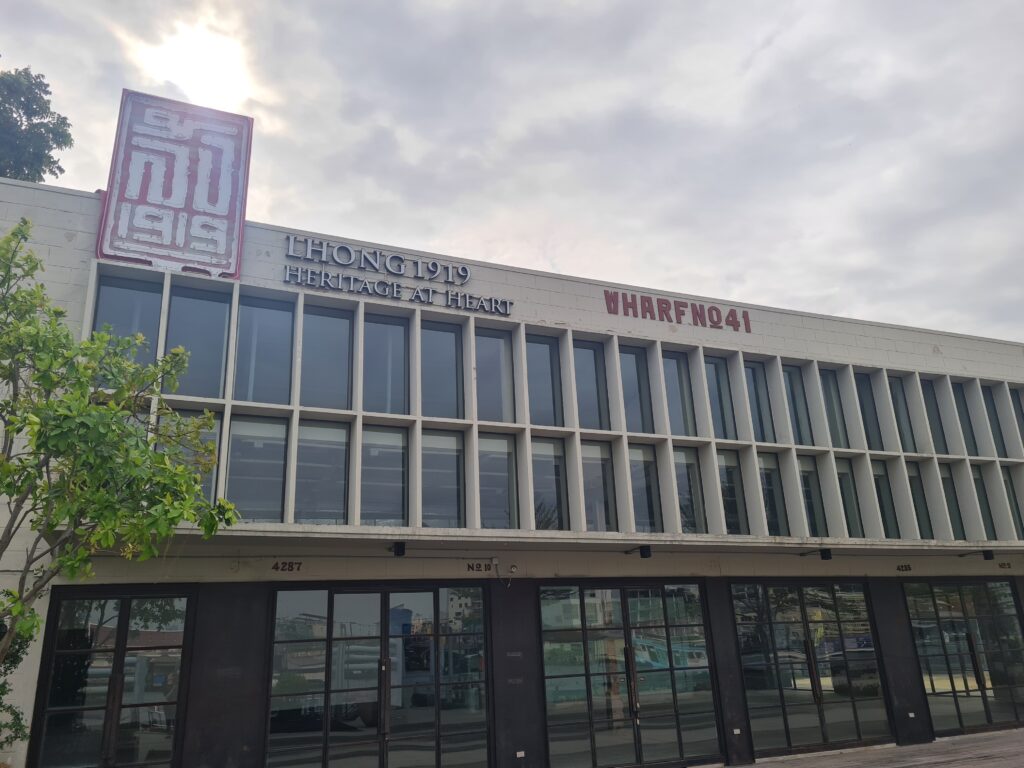
The main building at the riverside is yet to be opened to the public during our visit.

The port’s name is derived from the word Huang Chung Lhong (火船廊; lit: ‘steamer port’), an old name.

A place reviving the former port located on the Chao Phraya River, opposite Talad Noi.
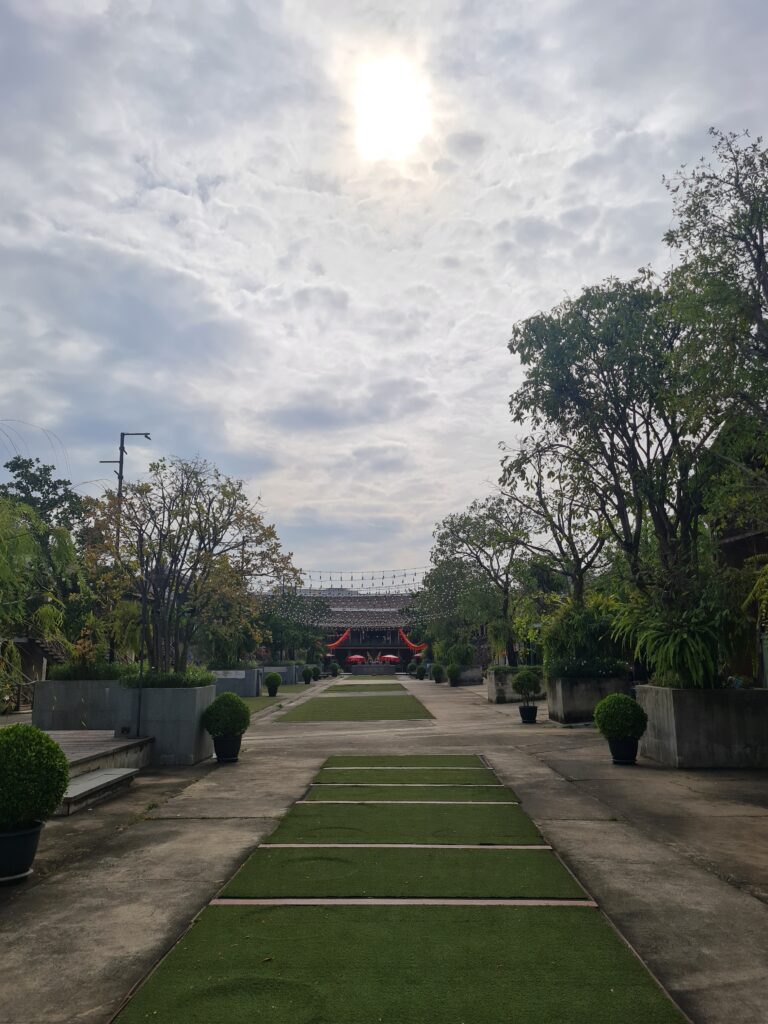
Looking back into the mansion compound from the riverside.

A teashop that is closed during our visit, could be due to public holiday.

A nicely decorated back lane.

A mural that just fit.

Walking back towards the car. A different view angle from the first photo above.


